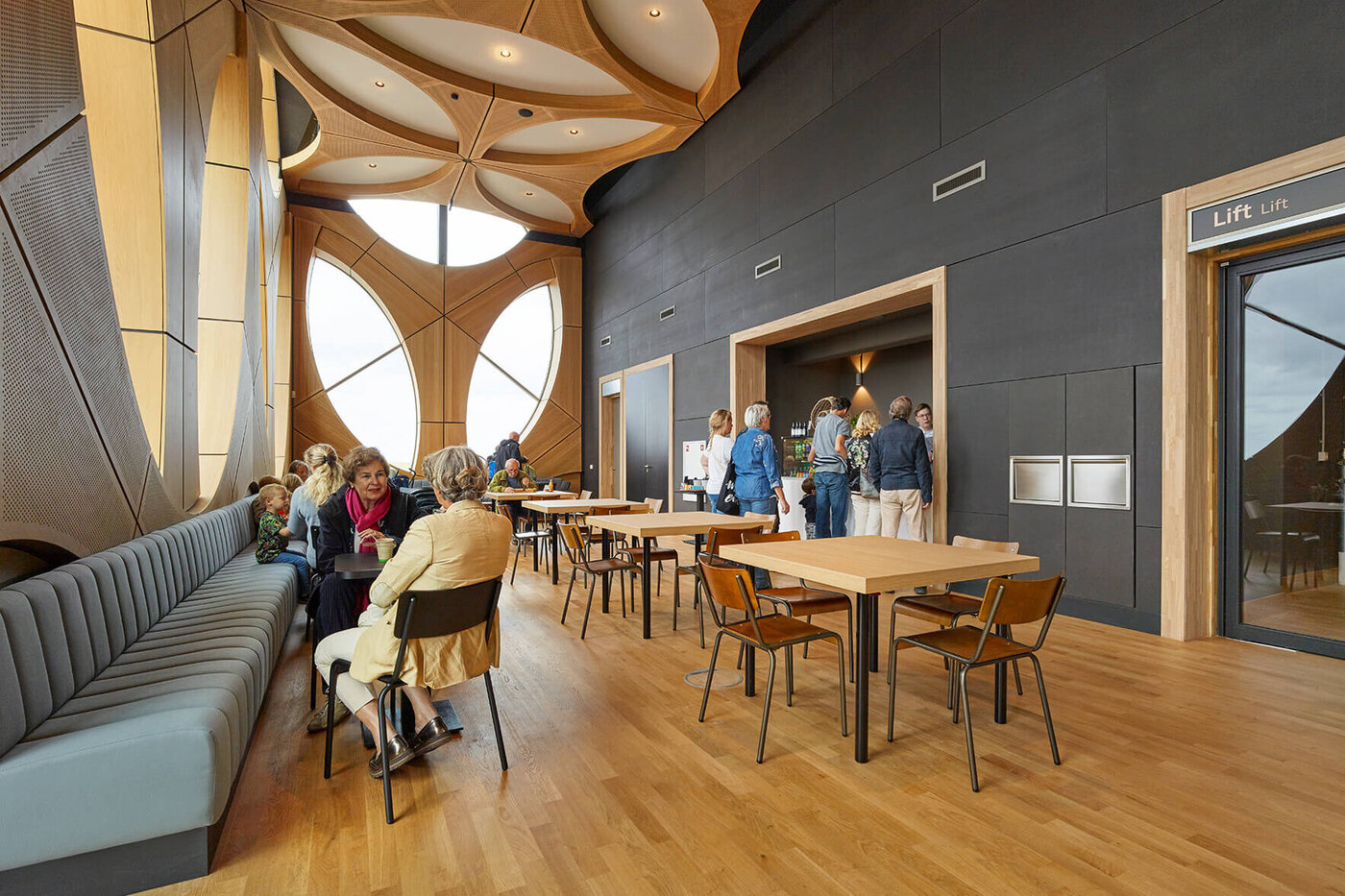Naturalis Leiden: clear the way for biodiversity

Not only the new building and the sustainable renovation of the Naturalis Biodiversity Center complex are spectacular. The collections are also special, and in recent years have expanded considerably through mergers to the staggering number of no less than 42 million objects.
Very special is the arrival of the skeleton of the T. rex excavated by a Naturalis team to the museum in 2016; Trix is the first Tyrannosaurus rex - owned by the museum itself - to be seen outside America. During the renovation, the dinosaur was first seen at the Pop-up exhibition "T. rex in Town, then she went on a trip around Europe so that as many people as possible could enjoy her. “But now she has found her place in the Naturalis dino room, she will never leave”, says Caroline Breunesse, head of exhibitions, with a smile.
The seven rooms of the museum deal with major themes such as life, death and reproduction. Already in the first room, in which the animal kingdom shows itself to visitors in a spectacular way, the design is clear. "The rooms are dark, which is not only better for the protection of our collection, but the lighting - together with the music - also provides an intense experience." The lounges have been deliberately kept light and spacious, as a peaceful base from which to experience the wonderful world of biodiversity.
In the old museum there was great pressure on facilities such as lifts, cloakroom and catering, says Suzanne de Jonge. She is project leader at Naturalis and was responsible for furnishing the catering areas of the new Naturalis, among other things. “We can still expand in this museum. For the large restaurant on the ground floor, we, together with our catering partner Vermaat, opted for a concept that is as accessible as possible. The space is high, spacious and fresh due to the use of natural colors and materials. Many families with children come here, so the materials are tailored to that. The kitchen works with local products and zero-waste as much as possible. Where we could, we opted for sustainable options, such as the picnic tables made of the sustainable material Resysta (with the properties of wood, but made from organic residual waste, ed.) And chairs made from recycled PET bottles.”
The text continues below the image
![[Translate to en_GB:] Naturalis, Leiden [Translate to en_GB:] Naturalis, Leiden](https://s.8437b15a.entry.domains/typo3/_processed_/3/c/csm_Naturalis%20Biodiversity%20Center-Leiden-1_e68bb5d80e.jpg)
The renewed Naturalis, a design by Neutelings Riedijk Architecten, forms one whole together with the existing building by Fons Verheijen. The connecting link between old and new is the atrium with the open-work walls and the roof. The light comes in beautifully through the organically shaped recesses - some see leaf shapes in them, others bones or a honeycomb - and all the glass used. From here, the museum rooms, the restaurant and the shop as well as the offices, laboratories and depots of the natural history institute are accessible. Naturalis chose to use materials that age naturally: natural stone, concrete, glass, steel and oak. For example, the exterior of the new museum is finished in red natural stone, alternated with relief strips of white concrete developed by artist Iris van Herpen.
Knowledge center
The courtyard is also accessible when you are not visiting the museum, and the same applies to the restaurant, the museum shop and the "Live Science" room where scientists work daily in front of the public. De Jonge: “We are more than a museum, and really the knowledge center for biodiversity. If we can reach as many people as possible, our mission will be successful. ” And that seems to be successful in the first week. On the day of the opening, there were long lines at the door before ten in the morning. In the first hour, the museum had no fewer than a thousand visitors, a provisional record.
![[Translate to en_GB:] Caroline Breunesse, Naturalis [Translate to en_GB:] Caroline Breunesse, Naturalis](https://s.8437b15a.entry.domains/typo3/_processed_/f/d/csm_Naturalis_Caroline%20Breunesse_2b79851bcf.jpg)
